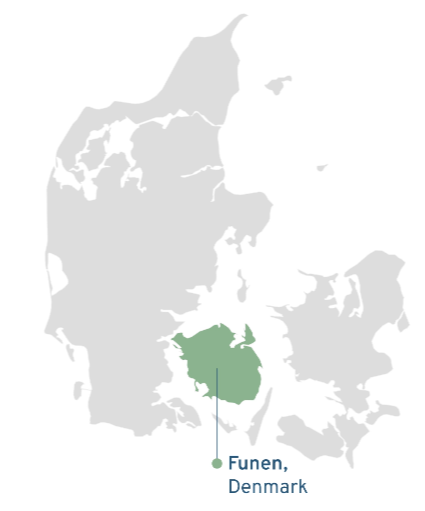In exploring the capacity of NbS for the Vollsmose area, we investigate the relationship between biodiversity, sustainability, and the water cycle. A baselining was completed which assessed water quality across the whole urban water system alongside biodiversity. This assessment was presented in a series of two workshops, and partners worked together to identify current strengths and weaknesses of nature in the area, and to suggest how these could benefit connected Nature-Based solutions. Overall, it was found the current ecological status of the wetland-lake system was poor, owing to poor physical habitat quality and possible pollutant leaching from a decommissioned landfill. Recommendations are made that the current natural wetland and lake system ecological status is first improved and that these can work together with a constructed wetland system. As a whole, this connected system would work as an NbS to achieve goals of improving water management, ecological status, and subsequent biodiversity.
The Lab1 includes the following tasks:
Data collection and analysis
- Description of the hydrological, chemical and natural status of freshwater areas based on existing knowledge including new knowledge generated during Lab1
- Identification of key areas with potential for nature-based solutions.
Model NbS description
- Development of a model for nature-based solutions (NBS) in Vollsmose.
- Description of the technical aspects and functions of the NBS in Vollsmose.
Dialogue Risk and Benefit Analysis
- Identification of potential risks when implementing NBS in Vollsmose
- Development of risk minimization strategies.
Social preference analysis
- Investigation of local stakeholders' preferences and attitudes towards NBS.
- Analysis of social benefits and challenges of NBS
Policy context
- Evaluation of policy framework and support for NBS.
- Development of recommendations for: (1) policy decision-making and support and (2) fundraising materials.
Results so far
In exploring the capacity of NbS for the Vollsmose area, the team investigate the relationship between biodiversity, sustainability, and the water cycle. A baselining was completed which assessed water quality across the whole urban water system alongside biodiversity. This assessment was presented in a series of two workshops, and partners worked together to identify current strengths and weaknesses of nature in the area, and to suggest how these could benefit connected Nature-Based solutions. Overall, it was found the current ecological status of the wetland-lake system was poor, owing to poor physical habitat quality and possible pollutant leaching from a decommissioned landfill. Recommendations are made that the current natural wetland and lake system ecological status is first improved and that these can work together with a constructed wetland system. As a whole, this connected system would work as an NbS to achieve goals of improving water management, ecological status, and subsequent biodiversity.
